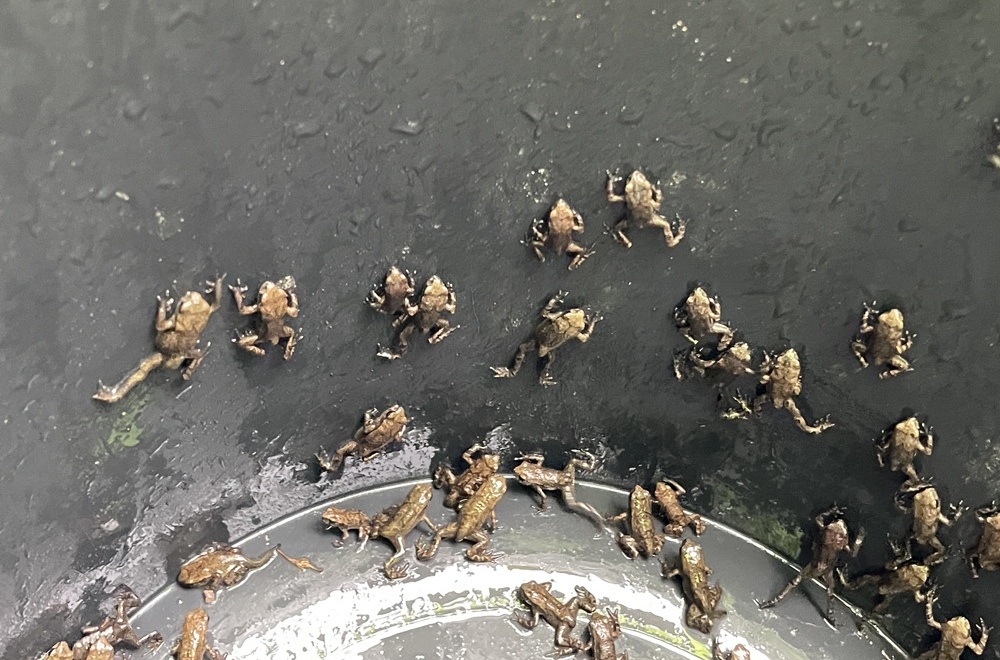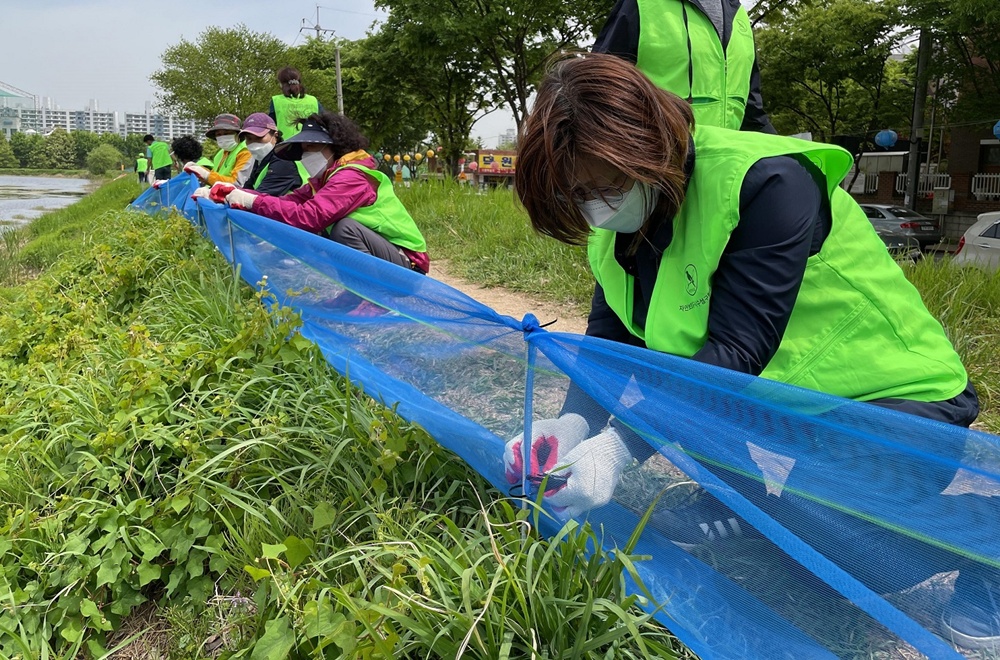
Baby toads born at Janghyeon detention pond in Ulsan's Jung-gu District on May 9 move to their main habitat of Hwangbangsan Mountain in a group. (Jung-gu District Office)
By Kang Gahui
Every year in mid-May, small creatures show up on roads around wetlands on rainy or humid days.
They are baby toads who begin their return to their main habitat on land.
Adult toads every spring leave for wetlands to lay eggs, and the hatched tadpoles grow into baby toads before heading to their main terrestrial habitat.
This journey, however, always entails risk. As amphibians that both move between wet and dry land, the babies need to cross roads and pass artificial structures like irrigation ditches or drains.
During their trip, many face the danger of death on the road or being trapped inside ditches.
For this reason, local government units, environmental groups and volunteers from across the country have banded together to protect such creatures.
They monitor the toads' movements and build fences in risky zones. In select areas, they restrict vehicle access and move such creatures as part of rescue operations.
This is considered an artificial shield for these small creatures so that they can safely continue their journeys across roads.
In 2022, the city council of Cheongju, Chungcheongbuk-do Province, enacted the country's first ordinance on reducing the deaths of small animals in artificial waterways and road accidents. This regulation includes the installation of escape facilities for small animals in artificial drainage and irrigation ditches, eco-corridors on roads and support for the rescue of such creatures.
This has spurred other local government units to introduce similar ordinances, making the protection of toads a major ecological policy.

A nature protection association in Daegu's Suseong-gu District and staff from the district office's green environment bureau in February 2024 install a protective fence to prevent toad roadkill on a 400-m route from Mangwolji to the entrance of a trail around Uksusan Mountain in Korea's No. 4 city. (Suseong-gu District Office)
In the country's fourth-largest city of Daegu, Suseong-gu District has the country's largest spawning grounds for toads. Whenever their migration season starts, the district office monitors their route via surveillance cameras, blocks cars from entering the toads' path and builds protection fences to prevent roadkill.
Volunteers also stand guard on the site to guide the toads toward a safe direction.
Since 2023, the office has injected KRW 20 billion in collaboration with a public subsidy project of the Ministry of Environment to promote the restoration of urban eco-axes and construction of green education facilities.
In traditional Korean folklore, the toad is considered a symbolic creature that helps people in need and repays good deeds in tales such as "Kongjwi and Patjwi," "The Centipede and the Toad," "The Centipede Market" and "The Toad Who Repaid Kindness."
In real life, toads remember and silently travel on the paths they were born on and grew up in a repeated lifecycle.
Humans should ensure that these small creatures of nature are protected. This small consideration is the first helpful step toward protecting the coexistence between nature and people and biodiversity.
kgh89@korea.kr